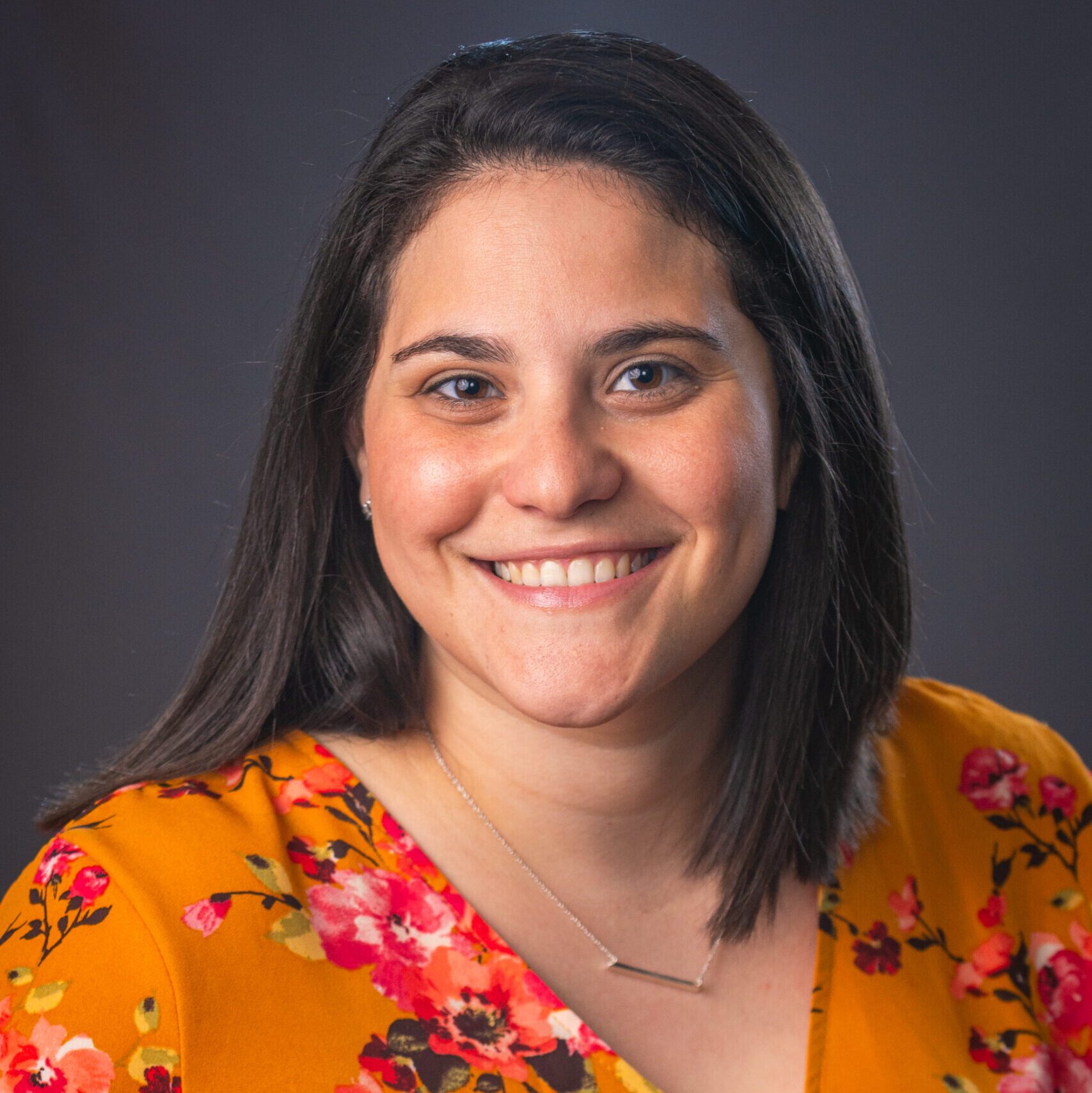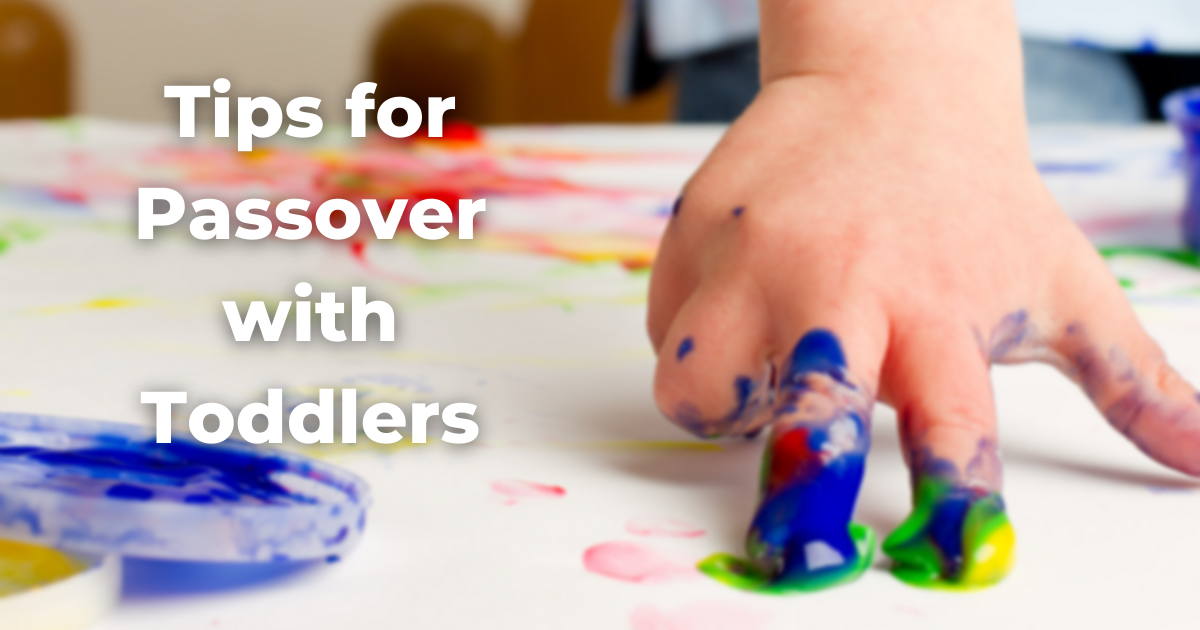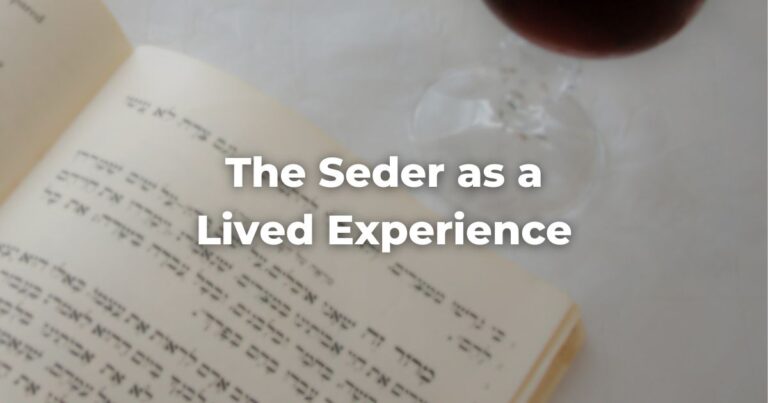Passover. No matter how you personally feel about the holiday, there is no doubt that it is the most celebrated Jewish holiday in modern times. Once you’ve gotten all the matzah and the house is clean, all that’s left to do is celebrate the holiday – but how to do that while also considering your young children?
Despite the fact that the Passover seder was, in fact, made for the purpose of teaching children the story of the Exodus, it can definitely still be yawn long (to say the least).
Of course, your family traditions will dictate which of the following tips you’ll be able to accommodate, but I’m hoping that the advice below will empower you to involve your little one in the Passover celebration.
Explain away.
First and foremost, the more you can describe what and why you are doing something for Passover, the better.
You probably already notice, but young children need constant repetition to support longer-term learning. Although hearing “but why?” one more time might drive you up the wall, remember that for young children, explanations help to create schemas (mental pictures) for what to expect in any given situation.
When they have a better sense of what to expect during Passover, that can reduce anxiety and, therefore, problem behavior. Of course, they will forget and you will have to repeat yourself for the 613th time, but it remains helpful nonetheless.
Insert [fun] here.
There are so many ways to infuse creativity into a seder or general Passover celebration to make the holiday fun for your toddler!
Art is always good.
Searching through different Haggadot (Jewish text for the Passover seder) online can help you identify which elements you want to cover as part of your seder. Then either before or during the seder, have your little one draw a few pictures to share with your guests (dictating their explanation of the artwork is always a plus).
For example, have them draw a version of the Seder plate. Then, create a dedicated space to display the artwork either on the wall or the table. There are plenty of DIY child-friendly Haggadot options to choose from online and older children, especially, enjoy having such an official role to play in your celebration.
Put the STORY into the Haggadah
Not only that but much of the seder requires a great deal of storytelling. Have an adult (or older child) with the best storytelling voice read from the Haggadah or even a picture book about Passover in their best and silliest voice to get the kids as interested as possible.
Looking for age-appropriate books about Passover? We love PJ Library for this purpose exactly. Check it out if you haven’t already!
Sing, even a little bit
Further, no seder is complete without the asking of the four questions. It is tradition for the youngest person at the seder to lead these, but don’t overthink it! Even teaching your toddler the “Ma nishtana ha-laila hazeh” portion of the song can be fun and so ADORABLE.
If you don’t think that works for your child, try practicing in English or have them sing a song they do know the words/can hum the tune to. If the rest of the table doesn’t completely ooh and aah over that, they are simply monsters.
Toys and books are good for everyone
And all jokes aside, no one will scoff at fun novelty toys on the Seder table (adults included). Even during years without young children at our Seders, my in-laws always have some plastic frogs to represent the plagues in addition to a toy Moses. A few child-safe fidgets and activities go a long way in keeping EVERYONE entertained.
And don’t forget the books! While you may have already read one aloud (see above), the youngest ones will still enjoy turning the pages and looking at pictures of other Passover-themed books. It is a great way to keep them occupied, engaged in something, and maybe even – dare we say it – quiet(ish).
Treats are delicious
Even better yet, save a special toy or treat for the person who finds the afikomen. One of my fondest memories of celebrating Passover as a child is searching for the hidden piece of matzah when the time comes.
Finding it gave someone bragging rights for the whole year, but everyone got a little something for participating which is always fun.
Be flexible!
Of course, all the best plans can fall short if your little one has a rough day, too short of a nap, or Mercury is simply in retrograde (hehe).
This next piece of advice will come as no surprise to parents, but when all else fails, have snacks on hand! Young children will probably LOVE the dipping that comes with the blessing for Karpas. Nearly any green will do the trick here and keep them coming.
And if they start snacking before the time officially calls for it – no need to fret. The most important thing is being flexible and simply appreciating the time spent together celebrating.
Suggestions here are in line with evidence-based developmentally appropriate practice (National Association for the Education of Young Children, 2020), but above all else, you know your child best. If that means a short, child-friendly seder in the early evening followed by the usual bedtime routine and an adults-only seder, one short seder for all, or something else entirely – that is ultimately your call!
Author
-

Sarah is a Research Assistant Professor in the Department of Medical Social Sciences at Northwestern University Feinberg School of Medicine. She earned her doctorate in Media, Technology, and Society at Northwestern University, working in the Center on Media and Human Development. Her research interests focus on the benefits of prosocial and educational media for young children, particularly in early childhood education.
View all posts




